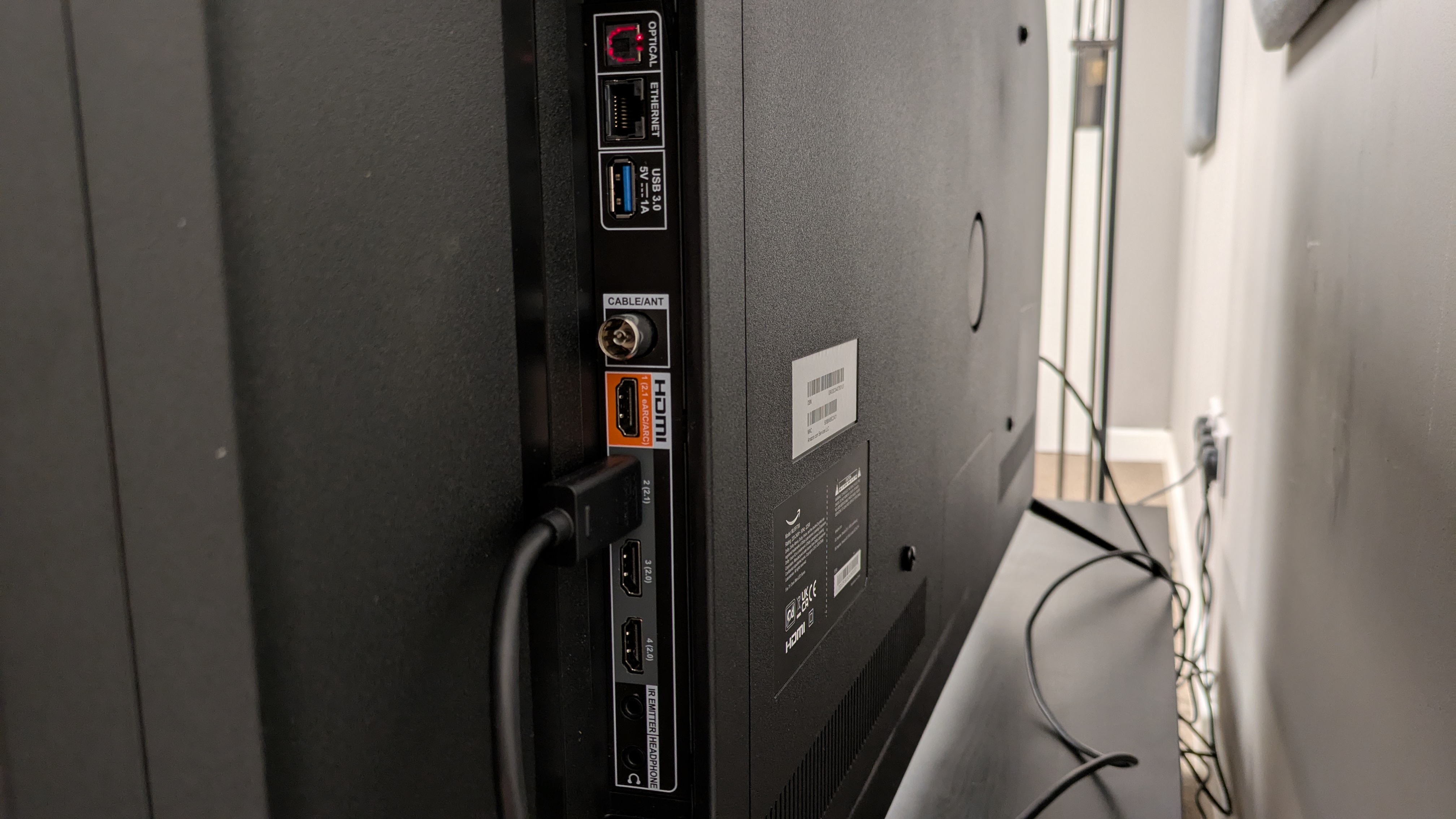More 4K TVs will be upgraded with better 120Hz connectivity in 2025, but it might not be the ones you expect, due to a surprising trade-off
You might be surprised which get upgraded and which don't

If you've been looking into the best gaming TVs in the last few years, you've probably noticed an annoying discrepancy between brands: the number of HDMI 2.1 ports offering full 4K 120Hz (or better) support with variable refresh rate support.
While most of the best LG TVs and best Samsung TVs offer this tech on all four of their HDMI ports, TVs from the likes of Hisense, TCL, Panasonic and Sony have been limited to offering the tech on just two of their four HDMI ports.
This is due to the chips powering the TVs: LG and Samsung have custom solutions enabling them to go all-out, while others rely on MediaTek chips, which have been limited to twin HDMI 2.1 ports.
However, that looked set to change in 2025. Last year, MediaTek announced that its next-gen chips would overcome this problem, and at the start of this year, it was confirmed that this chip would be in some of 2025's TVs.
So great – lots more of the best TVs will offer a full house of HDMI 2.1 now, right? Turns out, it's not as simple as that.

Power vs ports
My first inkling that we weren't about to get the universal upgrade we expected came when I saw the Panasonic Z95B at CES 2025. Panasonic confirmed that the new set would stick with the two HDMI 2.1 ports that its predecessor had.
While at CES, Hisense confirmed that some of its 2025 TVs would have four HDMI 2.1 ports, though, so the potential for it was clearly still there.
Get daily insight, inspiration and deals in your inbox
Sign up for breaking news, reviews, opinion, top tech deals, and more.
Clarity came during the launch of Philips' new TV range for 2025. In particular, I found out that the high-end Philips OLED+910 (and the mid-range OLED810) would have two HDMI 2.1 ports, while the budget Philips OLED760 and its mini-LED range would be getting the upgrade to four HDMI 2.1 ports.
Why the seemingly backward system where the higher-end TVs don't get the same features as the mid-range models do? Danny Tack, Senior Director Product Strategy & Planning for TP Vision (which makes Philips TVs), told me that they had to choose between picture processing power and HDMI support.
The higher-end end image quality features used in the top-end OLEDs requires more processing power than a chip with support for four HDMI 2.1 ports could supply, while that wasn't a problem for the more limited image processing used in the budget OLED.
Philips chose to focus on the image quality for the high-end OLEDs, so went with the more limited connectivity option, but the mid-range models get the extra HDMI flexibility because there's no such compromise.
I don't know that Panasonic faced the same problem, but I wouldn't be surprised at all, considering how refined and advanced the image processing is even on the Panasonic Z95A from last year. And it seems quite likely that Sony's 2025 TVs (as yet unannounced) would face the same dilemma.
We don't have full information about TCL and Hisense's ranges this year yet, so we'll have to see which sets end up with the upgrade and which don't.
Good news and bad news
It means that 2025 could be an odd year for TV specs. Those looking for a high-end gaming TV not from Samsung or LG might end up disappointed; those looking for a mid-range TV might end up getting more than they expected; those looking at the more budget end might find themselves limited again.
We'll make sure we call this information out in our reviews and guides, but I'm looking forward to the time when we can just assume that all HDMI ports on all TVs do the same thing…
You might also like…
- I review TVs for a living, and here are the 3 best TVs you can buy today
- I tested an ultra-cheap Dolby Atmos soundbar against a premium alternative, here's why it's worth spending the extra cash
- Movie sales – including 4K Blu-ray – fell again last year, but if you're going streaming only, you're massively missing out

Matt is TechRadar's Managing Editor for Entertainment, meaning he's in charge of persuading our team of writers and reviewers to watch the latest TV shows and movies on gorgeous TVs and listen to fantastic speakers and headphones. It's a tough task, as you can imagine. Matt has over a decade of experience in tech publishing, and previously ran the TV & audio coverage for our colleagues at T3.com, and before that he edited T3 magazine. During his career, he's also contributed to places as varied as Creative Bloq, PC Gamer, PetsRadar, MacLife, and Edge. TV and movie nerdism is his speciality, and he goes to the cinema three times a week. He's always happy to explain the virtues of Dolby Vision over a drink, but he might need to use props, like he's explaining the offside rule.
You must confirm your public display name before commenting
Please logout and then login again, you will then be prompted to enter your display name.